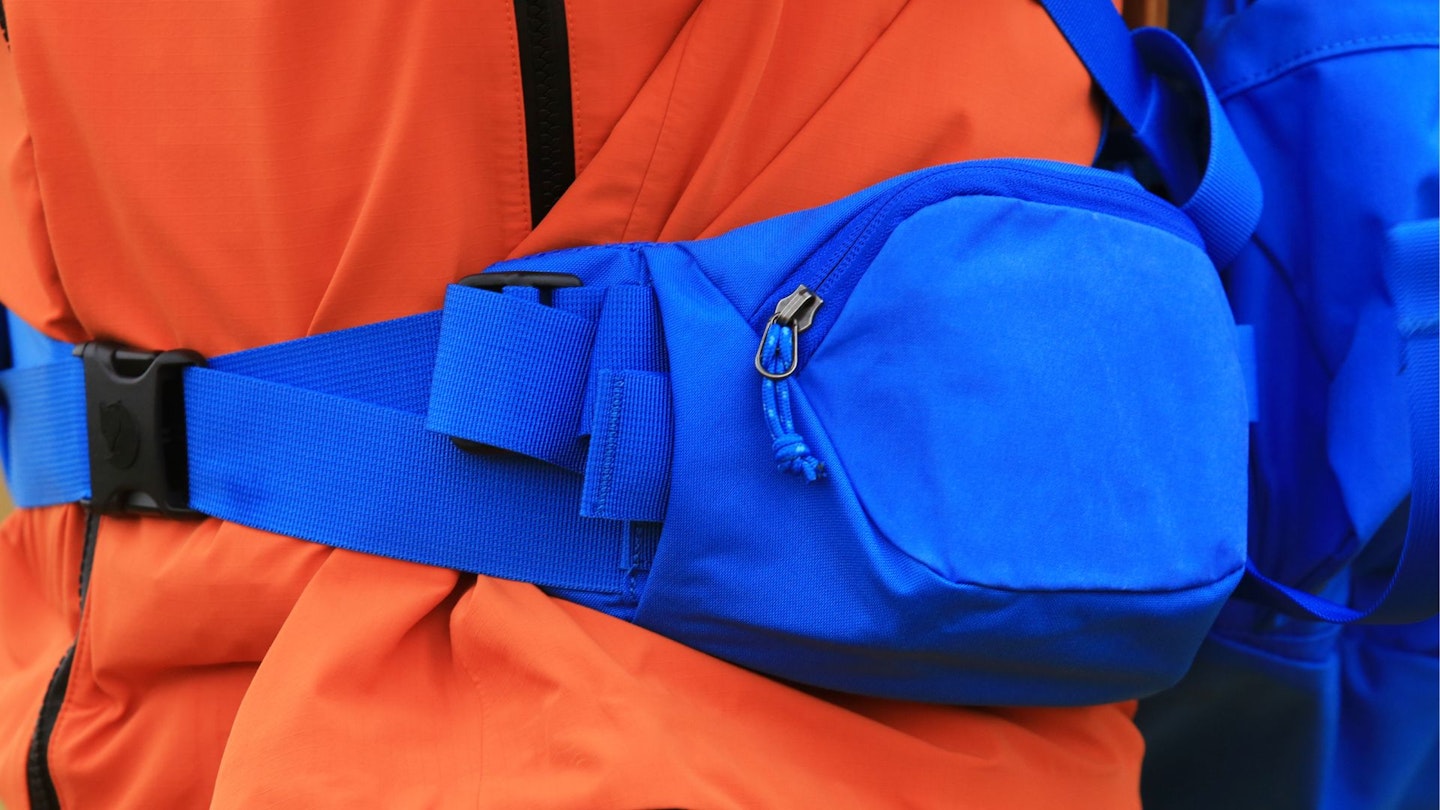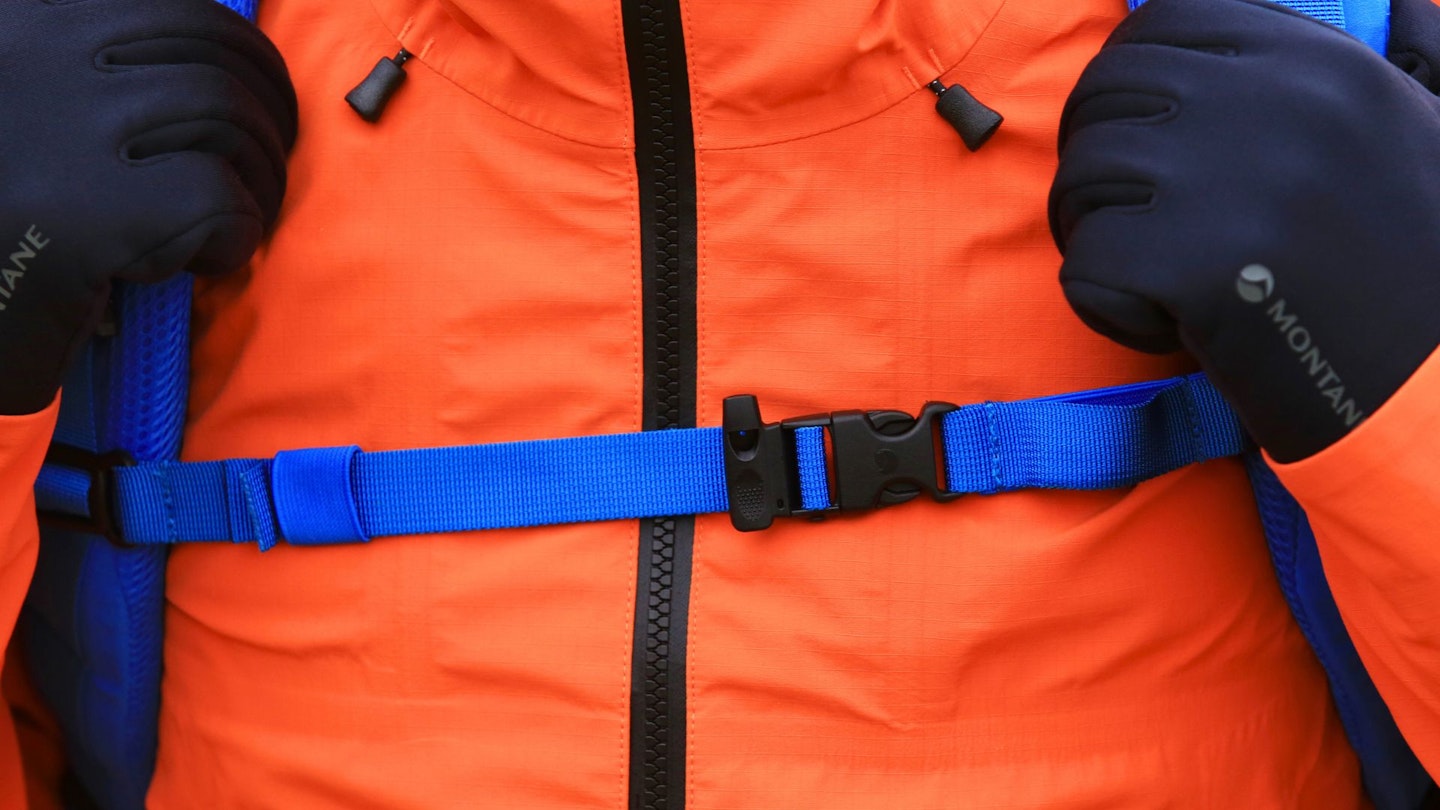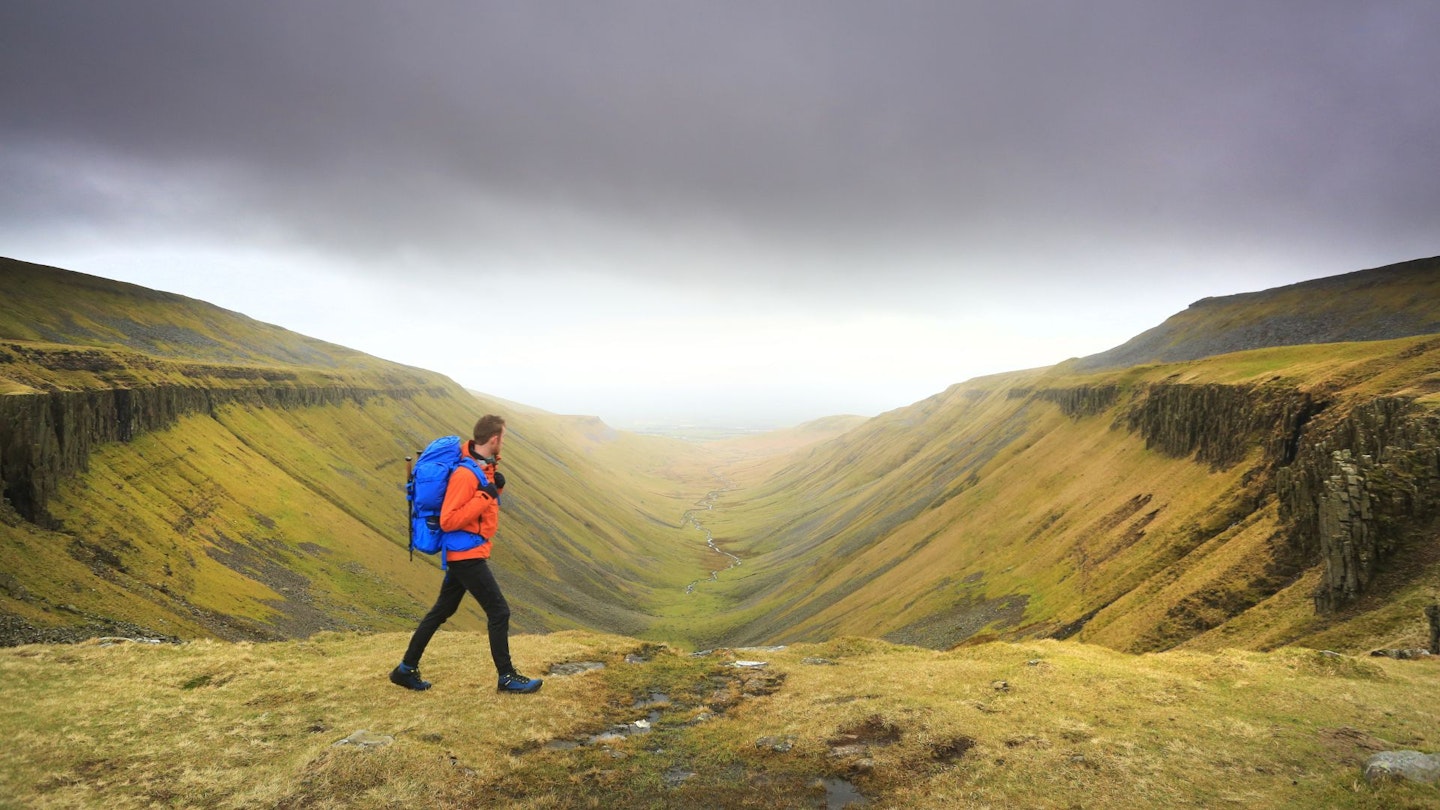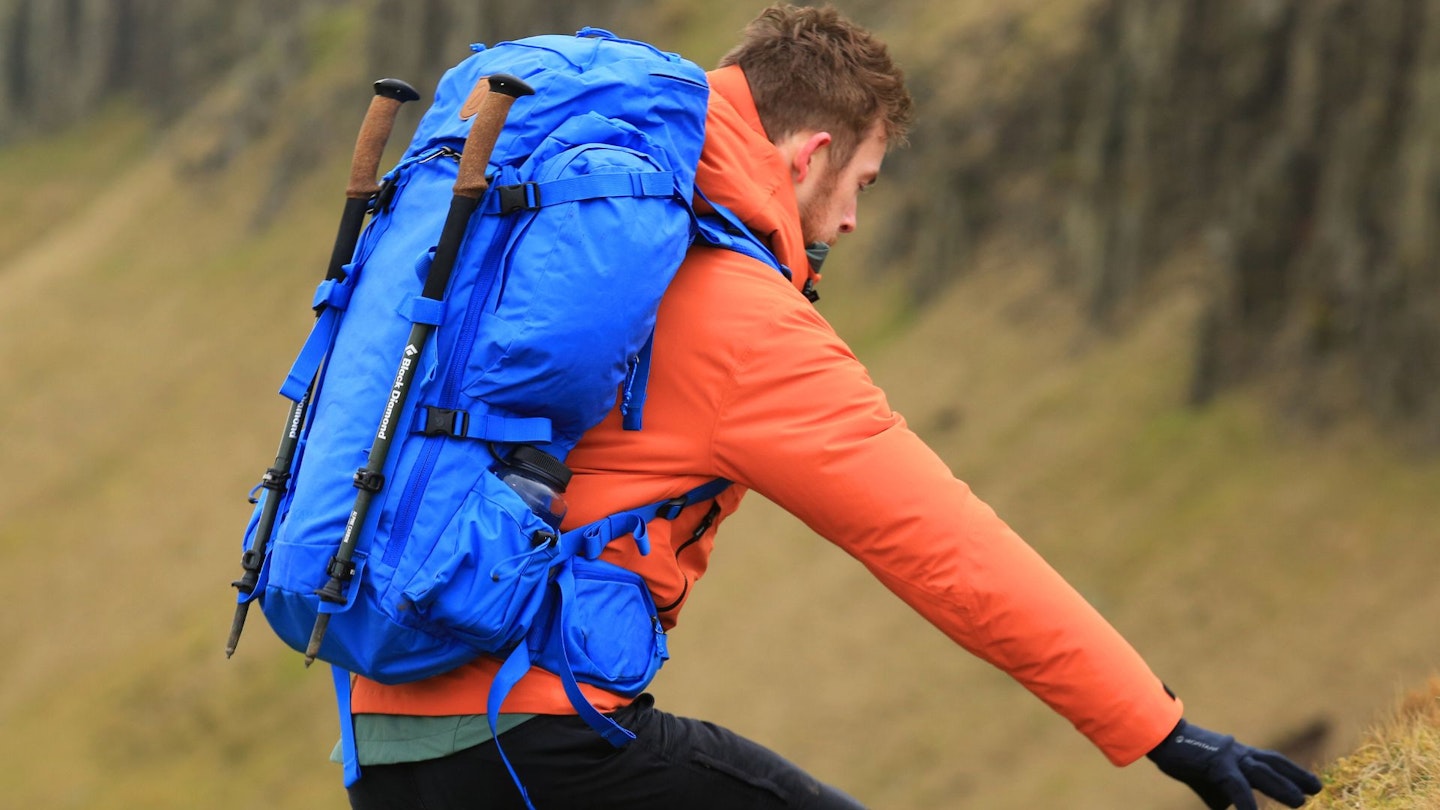Although Fjällräven has been a beneficiary (some might say victim) of becoming one of the world’s most desirable and fashionable outdoor brands, we’ve found its dedication to functionality has never wavered. And hiking backpacks are one of Fjällräven’s pillar products.
An aluminium framed backpacking rucksack was the Swedish brand’s first product, created by the founder of Fjällräven in his basement. Where other outdoor brands have moved to focus on the modern trend of ultralight, fast hiking, Fjällräven has stuck to its preference for leisurely, long-distance trekking.
The latest Fjällräven Kajka trekking backpacks hammer this point home. They are no lightweights, instead focusing on the best possible comfort for carrying heavy loads, providing loads of functional features and true long-term durability.

www.alpinetrek.co.uk
Pros
- Impressive carrying comfort with heavy loads
- Easily adjustable back system
- Will last a lifetime
- Sustainable design
- Detachable lid
- Classic looks
Cons
- No bottom opening
- Hipbelt pockets don't fit a smartphone
- Unisex - no women's specific versions
| Weight | 2.88kg |
| Volumes | 55L, 65L, 75L, 85L, 100L |
| Materials | Vinylon, recycled 500D nylon, recycled 210D nylon |
| Load capacity | Not stated |
Design and features

Back system
The Kajka looks quite classic – old school if you like. And one of the Kajka’s more unique features is its wooden frame. Most hiking packs use aluminium because it’s light – Fjällräven instead opted for birch wood because, while it’s still strong, has a carbon footprint 90% lower than an aluminium frame, and reduces the bag’s overall carbon footprint by 10%.
The Kajka’s back system is reasonably straight forward and prioritises comfort over other aspects like ventilation. It has a highly padded back panel that adjusts by sliding up or down the wooden frame and fixes in place with Velcro. The shoulder straps and hipbelt also benefit from generous padding.

Pockets and storage
The Kajka’s main compartment is accessed from the top via a drawcord closing, or the big U-shaped zip on the front. There isn’t a bottom opening, but that would be a bit redundant with the big U-zip in place. Within the main compartment there is a pouch for a hydration bladder and a smaller mesh pocket.

The hipbelt pockets are quite square, and while they’re good for snacks and small accessories, they didn’t fit a 6.7-inch smartphone. Fortunately, there are tall, spacious external side pockets that can be used for storing maps, snacks, extra layers, or a first aid kit, for example.
We liked the drink bottle holders as well – securely storing any shaped bottle thanks to a drawcord rather than elastic, and are surprisingly easy to access without taking the pack off.

The lid gets three pockets (two on the top, one underneath where you find the raincover), and the lid itself is detachable. You can then clip the lid onto the shoulder straps, thus gaining an extra front pouch if you wish.
On the front there are several means of attaching gear externally – there are Velcro adjustable loops, daisy chains, and webbing loops. You can even extend the volume of the pack by attaching a Kajka or Singi accessory (sold separately) to the pack.
Shop this product

Performance and comfort
We found that the Fjällräven Kajka (we tested the 55-litre version) fulfils its brief brilliantly. It’s certainly one of the most comfortable trekking packs we’ve used. Load transfer is spot on and the comfort we got from the back panel, strap, and belt padding was excellent.

Breathability and ventilation are acceptable for walking at a leisurely pace, but the Kajka does get a bit warm if you’re pushing the pace or hiking in the middle of summer. There is no high-tech suspended mesh panel or ventilation channel here – just a comfortable, stable padded panel that sits right against your back.
We liked how easy the Kajka is to adjust, and accessing gear is simple too. Those side pockets are very handy, as is the big U-shaped zip for the main compartment.

In terms of weight, the Kajka is certainly above average. The 55-litre version we tested weighs almost 2.9kg, which is anywhere from 500g up to a kilogram heavier than many rivals of a similar type and capacity. But again, Fjällräven has never been about the lowest possible weight. It’s about hiking in comfort at a slower pace and the Kajka delivers on that.

In addition to features and comfort, one of the other benefits of the heavy Kajka is longevity. Everything from the fabrics to the zips and buckles are chunky and durable. Fjällräven wants you to have this backpack for a lifetime, reinforced by the Kajka’s improved repairability from the previous iteration.
Shop this product
Sustainability
The Kajka scores well here. It’s made from Vinylon and nylon (510D and 210D), which are both synthetic materials, but the nylon is all recycled. Crucially, the Kajka is also PFC/PFAS-free.

But using recycled material is almost bare minimum for sustainability efforts these days. There is the entire life cycle impact of the product to consider, and put simply, the longer the product lasts, the more sustainable it is.
Pleasingly, the Kajka is a trekking pack you’d only buy once. All its components feel heavy duty and durable, and if buckles break or fabrics tear, you’d have no issue getting it repaired or doing it yourself.
Price and competition

At the time of writing the Fjällräven Kajka 55 costs £360. That’s a large number. It even outdoes the already pricey Osprey Aether/Ariel packs by more than £100.
We recognise that you’re paying more upfront for superb performance, great features, durability, and better value in the long run, but we also feel like you’re paying a bit more on top of these things for the little Arctic fox stitched onto the lid.
Some of you will like how the Kajka looks (we think it’s a lot more visually appealing than most of its competitors), and now know it performs brilliantly too. If you take the plunge, you’ll love it.
However, don’t feel despair if that RRP is too high. Alternatives such as the Deuter Aircontact Core series and aforementioned Osprey Aether/Ariel packs are modern, fully featured, sustainable trekking packs available at better prices.
Verdict

It’s pricey – very pricey, but the Fjällräven Kajka is a wonderful trekking backpack with all the traits you want: comfort with heavy loads, functional features, more sustainable materials, and true made-for-a-lifetime durability.
Shop this product
How we tested

Chris Williams is one of our staff writers and carried out our test and review of the 55-litre version of the Fjällräven Kajka trekking backpack, primarily in the Cumbrian Pennines.
Chris has been with LFTO since 2021 and has several years of journalistic and outdoor industry experience, in addition to a lifetime’s worth of hiking.
